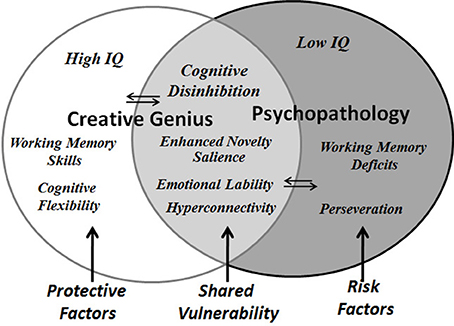Thursday, October 30, 2014
elon musk's fears not completely crazy?
By
CNu
at
October 30, 2014
0
comments
![]()
Labels: count zero , egregores , Great Filters
Wednesday, October 29, 2014
what real denial of access to public spaces looks like...,
By
CNu
at
October 29, 2014
1 comments
![]()
Labels: Deep State , elite , establishment , hegemony , institutional deconstruction
googol is not what it seems?
By
CNu
at
October 29, 2014
0
comments
![]()
Labels: cognitive infiltration , Deep State , elite , establishment , global system of 1% supremacy , hegemony
Tuesday, October 28, 2014
bat bombs bringing the ebola
By
Dale Asberry
at
October 28, 2014
5
comments
![]()
Labels: high strangeness , History's Mysteries , tricknology
can the Cathedral survive: if you can't tyrannize nerds how you gonna tyrannize gunsels?
By
CNu
at
October 28, 2014
2
comments
![]()
Labels: Cathedral , civil war , individual sovereignty , The Hardline
can the Cathedral survive: demand for action-free, politically-correct games cannot be coerced
By
CNu
at
October 28, 2014
0
comments
![]()
Labels: Cathedral , chess-not checkers , hustle-hard , individual vs. collective , institutional deconstruction
fight like a man: winning public opinion warfare
By
CNu
at
October 28, 2014
0
comments
![]()
Labels: dominate , hustle-hard , individual sovereignty , What IT DO Shawty...
does couch potato 2.0 see these interwebs as "zillion channel" teevee?
By
CNu
at
October 28, 2014
0
comments
![]()
Labels: cognitive infiltration , consumerism , contraction , corporatism , de-evolution , Living Memory
Monday, October 27, 2014
even nazi scum gets respect because it will fight you to the death
By
CNu
at
October 27, 2014
1 comments
![]()
Labels: American Original , hegemony , Living Memory , Race and Ethnicity , What IT DO Shawty...
cathedral: the hard, cold, truth that fighting like a girl leads to an ass-whooping...,
By
CNu
at
October 27, 2014
0
comments
![]()
Labels: Cathedral , FAIL , not a good look
Sunday, October 26, 2014
why we need a neuroscience of creativity and psychopathology
By
CNu
at
October 26, 2014
12
comments
![]()
Labels: neuromancy , scientific mystery , subrealist oeuvre...
a head full of symphonies
By
CNu
at
October 26, 2014
0
comments
![]()
Labels: ability , awareness , gifts , Possibilities
Saturday, October 25, 2014
yale team projects 90,000 deaths in one liberian county alone by mid-december
Methods - We developed a transmission model of Ebola virus that we fitted to reported EVD cases and deaths in Montserrado County, Liberia. We used this model to assess the effectiveness of expanding EVD treatment centres, increasing case ascertainment, and allocating protective kits for controlling the outbreak in Montserrado. We varied the efficacy of protective kits from 10% to 50%. We compared intervention initiation on Oct 15, 2014, Oct 31, 2014, and Nov 15, 2014. The status quo intervention was defined in terms of case ascertainment and capacity of EVD treatment centres on Sept 23, 2014, and all behaviour and contact patterns relevant to transmission as they were occurring at that time. The primary outcome measure was the expected number of cases averted by Dec 15, 2014.
Findings - We estimated the basic reproductive number for EVD in Montserrado to be 2·49 (95% CI 2·38—2·60). We expect that allocating 4800 additional beds at EVD treatment centres and increasing case ascertainment five-fold in November, 2014, can avert 77 312 (95% CI 68 400—85 870) cases of EVD relative to the status quo by Dec 15, 2014. Complementing these measures with protective kit allocation raises the expectation as high as 97 940 (90 096—105 606) EVD cases. If deployed by Oct 15, 2014, equivalent interventions would have been expected to avert 137 432 (129 736—145 874) cases of EVD. If delayed to Nov 15, 2014, we expect the interventions will at best avert 53 957 (46 963—60 490) EVD cases.
Interpretation - The number of beds at EVD treatment centres needed to effectively control EVD in Montserrado substantially exceeds the 1700 pledged by the USA to west Africa. Accelerated case ascertainment is needed to maximise effectiveness of expanding the capacity of EVD treatment centres. Distributing protective kits can further augment prevention of EVD, but it is not an adequate stand-alone measure for controlling the outbreak. Our findings highlight the rapidly closing window of opportunity for controlling the outbreak and averting a catastrophic toll of EVD cases and deaths.
Funding - US National Institutes of Health.
By
CNu
at
October 25, 2014
0
comments
![]()
Labels: Collapse Casualties , cull-tech , gain of function
Friday, October 24, 2014
please help a brotha out: wtf feed talkin-bout?
 RATHER THAN AWARE that after 50 years of VOTING FOR HIS SALVATION -
their CONSUMER STATUS makes them INCOMPETENT to provide ONE DAMNED BIT
OF STRUCTURAL ASSISTANCE to the people in West Africa.
RATHER THAN AWARE that after 50 years of VOTING FOR HIS SALVATION -
their CONSUMER STATUS makes them INCOMPETENT to provide ONE DAMNED BIT
OF STRUCTURAL ASSISTANCE to the people in West Africa.
By
CNu
at
October 24, 2014
4
comments
![]()
Labels: WTF?
the ebola epidemic in West Africa has U.S. biowarfare programs written all over it.
By
CNu
at
October 24, 2014
23
comments
![]()
Labels: cull-tech , ethics , eugenics , Naked Emperor
gain of function...,
By
CNu
at
October 24, 2014
0
comments
![]()
Labels: cull-tech , eugenics , tactical evolution
future time orientation gone wild
By
CNu
at
October 24, 2014
0
comments
![]()
Labels: big don special , cull-tech , eugenics , History's Mysteries , Race and Ethnicity
oh my..., the rabbit-hole has turned up a mother-lode
Why did the helicopter which passed over the scene with heat-seeking equipment not detect the body soon after death – a piece of information obtained using the Freedom of Information Act five years after the Hutton Inquiry ended?
Did the police and three officers from MI5's Technical Assessment Unit strip the wallpaper at Dr Kelly's home in the hours after he was reported missing – but before his body was found? Had Dr Kelly written 40,000 words of a book on Iraq and biological warfare which they took away? Where are his computers now?
By
CNu
at
October 24, 2014
0
comments
![]()
Labels: cull-tech , eugenics , History's Mysteries
Why Are Biden And Blinken Complicit In The Ethnic Cleansing Of The Palestinians From Israel?
americanconservative | ong after the current administration passes from the scene, President Joseph R. Biden and Secretary of State Ant...

-
theatlantic | The Ku Klux Klan, Ronald Reagan, and, for most of its history, the NRA all worked to control guns. The Founding Fathers...
-
Video - John Marco Allegro in an interview with Van Kooten & De Bie. TSMATC | Describing the growth of the mushroom ( boletos), P...
-
Farmer Scrub | We've just completed one full year of weighing and recording everything we harvest from the yard. I've uploaded a s...







